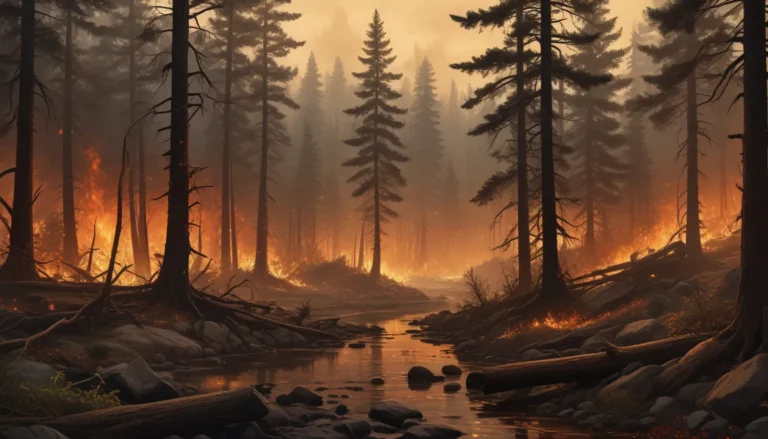A Note About Images: The images used in our articles are for illustration purposes only and may not exactly match the content. They are meant to engage readers, but the text should be relied upon for accurate information.
Aquifers are not just unassuming underground formations; they are essential components of Earth’s natural water resources that play a critical role in providing fresh water to communities worldwide. These hidden water reserves are crucial for various aspects of life, including drinking, farming, and industrial use. In this article, we will explore nine extraordinary facts about aquifers, shedding light on their importance, formation, and impact on our daily lives. Let’s dive in and discover the hidden wonders of these extraordinary underground water sources.
The Hidden Water Reserves
Aquifers serve as vast underground reservoirs that store and transmit water through permeable rock layers. These hidden water reserves are vital sources of freshwater, playing a crucial role in providing drinking water, irrigation, and industrial water supply.
The Largest Source of Groundwater
Accounting for 95% of Earth’s accessible freshwater supply, aquifers stand as the largest source of groundwater. Found beneath continents, coastal regions, and even offshore, these underground reservoirs store massive amounts of water replenished by natural processes like precipitation and infiltration.
Varied Types of Aquifers
Aquifers come in different forms, including unconfined, confined, and artesian aquifers. Unconfined aquifers have a water table intersecting the ground surface, while confined aquifers are trapped between impermeable layers. Artesian aquifers, on the other hand, contain pressurized water that rises to the surface when tapped.
Ancient Water Reservoirs
Some aquifers have been storing water for thousands of years, serving as repositories of ancient water. These water reserves offer valuable insights into Earth’s history and climate changes, providing scientists with essential data for research and analysis.
The Ogallala Aquifer
Situated beneath the Great Plains of the United States, the Ogallala Aquifer ranks as one of the largest and most important aquifers globally. Stretching across eight states, this aquifer plays a critical role in providing water resources for agriculture in the region.
Aquifer Depletion and Sustainability
With excessive pumping and escalating water demands, many aquifers face depletion worldwide. Sustainable management practices such as water conservation, recharging, and efficient irrigation techniques are essential to ensure the longevity and health of aquifers.
Connection to Surface Water
Aquifers often interconnect with surface water bodies like rivers, lakes, and wetlands. Activities affecting surface water quality can impact the water stored in aquifers, emphasizing the importance of proper land and water management to prevent contamination and maintain water quality.
Aquifers and Ecosystems
Aquifers support diverse ecosystems with species adapted to the unique underground environment. These ecosystems rely on aquifer groundwater for survival, highlighting the need to protect and preserve these underground habitats.
Aquifers and Climate Change
Climate change can significantly impact aquifers by altering precipitation patterns, increasing evaporation rates, and influencing groundwater recharge. Understanding these effects is crucial to adapt and implement sustainable water management strategies.
Conclusion
Aquifers are remarkable natural formations that play a vital role in sustaining life on our planet. From ancient water reserves to diverse types and sizes, aquifers are intriguing geological wonders that require protection and preservation. By implementing sustainable practices and raising awareness about the importance of aquifers, we can ensure a safe and reliable water supply for future generations.
FAQs
- What is an aquifer?
-
An aquifer is an underground layer of permeable rock, gravel, or sand that contains water and can supply wells and springs.
-
How are aquifers formed?
-
Aquifers are formed over long periods through the accumulation of rainwater or snowmelt that seeps into the ground and gets trapped between layers of impermeable rock or clay.
-
What are the different types of aquifers?
-
There are several types of aquifers, including confined aquifers, unconfined aquifers, and artesian aquifers, each with unique characteristics and water storage capabilities.
-
How do aquifers contribute to our water supply?
-
Aquifers act as natural stores of freshwater, accessible through wells and used for drinking, irrigation, and various industrial activities.
-
Can aquifers become depleted?
-
Yes, over-pumping and excessive extraction of water from aquifers can lead to depletion, causing water levels to drop and potentially damaging the aquifer system.
-
Are aquifers prone to contamination?
-
Yes, aquifers can be susceptible to pollution from various sources such as industrial waste, agricultural runoff, and improper disposal of hazardous materials, affecting the water quality stored within them.
-
How can we protect aquifers?
-
By practicing water conservation, avoiding the use of harmful chemicals near water sources, and implementing sustainable water management strategies, we can protect and preserve aquifers.
-
Can aquifer water be used for drinking without treatment?
-
While some aquifers provide naturally clean and safe drinking water, it is recommended to test and treat the water to ensure quality and eliminate potential contaminants.
-
Are aquifers important for ecosystems?
- Yes, aquifers play a vital role in supporting ecosystems by supplying water to wetlands, rivers, and streams, providing habitat for a variety of plants and animals.
Trust in our commitment to delivering trustworthy and engaging content as you explore and learn about the hidden wonders of aquifers.






